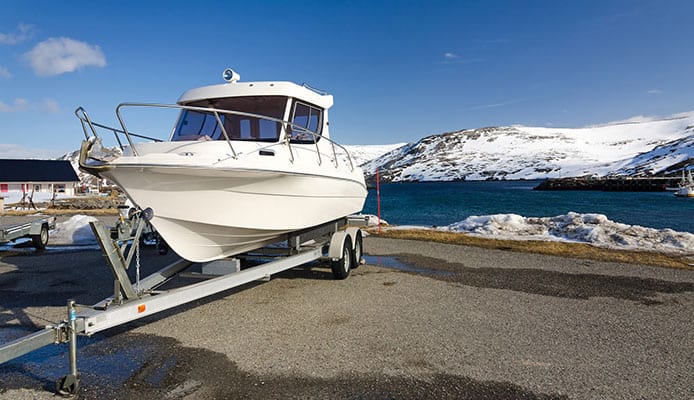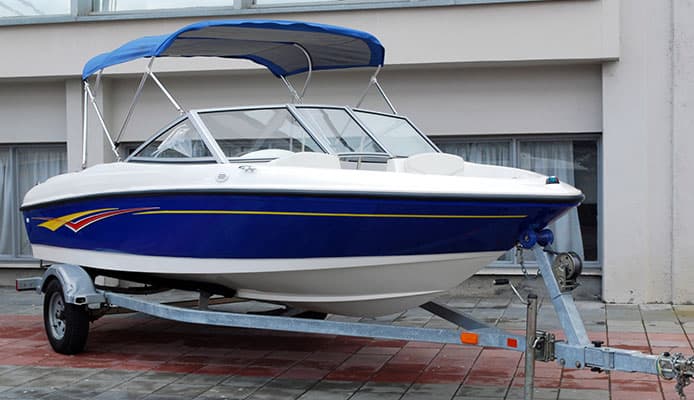
After choosing the best time to buy a boat, any avid outdoor enthusiast who owns a small boat has had to deal with a trailer tongue that is simply too short. Often you are forced to drive the rear wheels of the vehicle into the water to best launch the boat.
While there are companies that build a bolt-on kit, these are often quite expensive. The other alternative is to visit a welding shop and get an extension made. However, this will also cost you money.
An even better idea is to make your removable extension. The process doesn’t have to be difficult and with a few good tools, you can easily create your boat extension. This DIY trailer tongue extension guide focuses on building your very own boat trailer extension.
How to create a trailer tongue extension
The first step on how to extend the trailer tongue is a source of a heavy steel tube. Note that it should be the right size for the trailer. It is better if the steel tube gave an extra length extension and be at least 8 feet long.
The main reason why it should be heavy-duty is that the weight could result in a very tiny crack which over time will extend. This will ultimately cause it to break which in a worst-case scenario could result in a road accident.
Always ensure that you go through the boat trailer maintenance checklist, tips, and tricks to keep it in the best condition.
Then you will also need a hitch coupler. This will go to the vehicle end. You will find these of different sizes and should pick one that is of the right size for the trailer ball.
There is also the end that goes to the trailer. This should fit into the steel receiver tube. Sometimes you will need to be imaginative with mounting the receiver. You can either fix it on top of the trailer tongue or below the trailer tongue.
However, note that you should never mount it on the side mainly because the greatest forces that are in work here are vertical.
You may also need spacers. These will raise the extension above the trailer’s coupler such that it clears the latch during your DIY trailer tongue extension. Spacers should be heavy-duty to withstand the weight. To fix the spacers in place, all you will need is hardware store brackets.
Whenever you get on your boat, you will benefit from having a reliable marine GPS.
Using a heavy receiver mount
Sometimes you may need to use a heavy receiver mount. You can add to the robustness by beefing up the whole set up. Start by using quarter-inch steel bars. These will be drilled through and will be used to create pieces of the clamp.
To secure the clamps use ½ inch bolts. This is how to extend the trailer tongue.
If on the other hand, you have a larger boat that weighs over 2000 pounds, then you can opt for welding the receiver on the trailer.
Also, make sure that the boat trailer also comes with the best boat trailer tires for the best transportation.
You might also like: Boat Trailer Maintenance Checklist, Tips, And Tricks
Using a welded receiver
Other times you may lack a convenient position for welding the receiver mount. A good alternative is to have it welded at the front of the frame of the trailer.
When using a welded receiver during your DIY trailer tongue extension, you will need an extension tube that is much longer. The function, however, is very similar to the version we looked at above that is bolted on.
Using a tongue extension is far easier. When you want to launch the boat all you will need to do is back the trailer to the head of the lamp. Ensure it is at a level point. This will allow you to move straight back.
Then all you will have to do is to chock the wheels of the trailer and unhitch it. Then pull forward and let the extension bar slip in place. Pin the extension bar and hitch the coupler onto the vehicle.
You will notice that this kind of launch is much more controlled especially when you compare it to the rope or the chain method that some boaters will use.
Granted, the method allows the boat to slide down the ramp and move away from the vehicle.
However, the issue with this method is that the tongue of the trailer will need to be held higher up to allow the boat to slide. Also, there is a need for wheels or a wheeled jack for this to be possible. One problem with these is that the wheeled tongue jacks are not designed to carry the loads and will therefore not last very long.
One of the most important tools to have is a good boat trailer winch to help load the boat onto the water as well as take it from the water.
Why the tongue length is important
To find out the tongue length measure the distance from the center of the toe ball to the trailer’s front cross center. When the tongue is too short, there is always a risk of your toe vehicle clipping the front section of the trailer when you are changing directions.
However, the type of vehicle that you use will also determine the tongue length. Off-roaders will work best with short tongues as they are better at making maneuvers. As a standard rule of thumb, ensure that the tongue length is at least half the length of the tow vehicle.
Even after extending your boat trailer tongue, you will also need a strong trailer tongue jack to get the boat onto the car hitch for towing.
Globo Surf Overview
The tongue plays an important part when launching your boat. First, it is the part that ensures that the trailer remains balanced when driving and also keeps the weight on the tow hitch. This is why it’s important to learn how to extend the trailer tongue.


